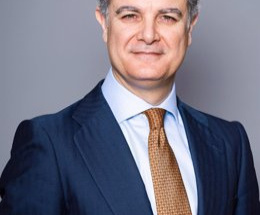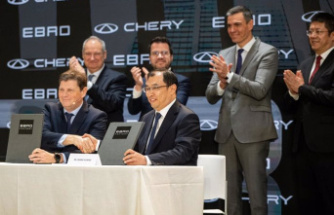After procrastinating for 10 years, Canada is preparing to acquire 88 F-35 fighter jets at a cost of nearly $20 billion.
• Read also: Expensive purchases to upgrade the army
• Read also: Here's why Trudeau wants F-35 planes
• Read also: The F-35, a sensible choice, but coming very late, according to an expert
The device is controversial. It is said to be too complicated, not to the point, expensive to maintain. Former U.S. Secretary of Defense Christopher Miller even called him “a bunch of…” [shit] at a press conference early last year.
However, its high technology impresses and its ability to evade enemy radar is touted. And he is also the choice of many armed forces outside the United States. So far, 14 countries have ordered it.
Before Canada places its final purchase order by the end of the year, we bring you the perspective of two seasoned aviators who have diametrically opposed opinions on the F-35.
Former test pilot in the United States for the company Lockheed, the manufacturer of the F-35, Billie Flynn, knows the model well. He has flown his wings many times as a test pilot.
He had previously been a fighter pilot in the Canadian Armed Forces. It is a kind of legend in the aviation world here.
For him, there is no doubt: Canada made the best decision by choosing the device as the new fighter plane, the most sophisticated that has ever existed, he says.
"When you fly an F-35, you have a sense of omnipotence and invincibility in every task you perform," he says.
flying computer
In his opinion, the F-35 offers unparalleled combat capabilities because of the technology on board.
"It's a real flying computer," he says.
In addition to being designed to evade enemy radar thanks to the design of its wings and its fuselage, it is equipped with sophisticated means of detection interconnected between them.
“With sensor fusion, the pilot and the aircraft pick up everything in the air, over the sea and on the ground within a 360 degree radius around the aircraft, in some cases hundreds of miles away,” says Flynn.
The F-35 comes with a pilot helmet, also out of the ordinary, he recalls. Valued at $500,000, the helmet is equipped with artificial vision and allows the pilot to literally see through the plane when looking outside.
This plane will allow, underlines Mr. Flynn, to face the planes of last generation which are manufacturing the Russians and the Chinese.
“It is crucial to ensure that, if Canada has to send our men and women of the Armed Forces into high-risk environments, our fighters are as effective as possible and that they achieve victories every time. »
long focus
Mr. Flynn concedes that the development of the F-35 is long and arduous. The plane has been flying since 2006 and it is not yet considered finished.
But, according to him, this long journey is attributable to the very nature of the program. After all, he notes, “it is the most complex device that has ever been designed. »
Critics, in the United States and elsewhere in the world, are commensurate with the size of the program, whose final bill is estimated at $ 1.5 trillion, that is to say that they are strong, concedes Mr. Flynn.
According to him, Canada's 10-year delay in purchasing the F-35 has its upsides. When the first examples begin to be delivered to the Canadian Forces, the aircraft will have benefited from the long break-in carried out by the Americans and other countries that have already purchased them.
Canada is about to buy a fighter jet that is downright out of date, says French military analyst Xavier Tytelman.
"Maybe it will be in 10 years, but today, we don't know what this plane is really worth," he said in an interview.
Mr. Tytelman, who served in the French military aviation, is known for his biting analyzes of the failures of the Russian army in the current Ukrainian conflict.
He recalls that, for the moment, the list of faults of the F-35 is long.
Here are the main ones, according to him
The plane's immense complexity means, Tytelman says, it's still not fully operational 15 years after its first test flight. Thus, the 1358 copies of the F-35 currently flying are not final versions of the aircraft. Therefore, it is impossible to say whether the F-35s that Canada will take delivery of by the end of the decade will be ready.
Doubts
And even the US military seems to have doubts, Mr. Tytelman continues: “Instead of accelerating the production of the F-35 in the United States for the American forces, it is slowing down its production. »
In March, the US Department of Defense announced, without giving any explanation, that it was cutting F-35 orders planned for next year by more than a third, from 94 to 61 aircraft.
Mr. Tytelman also recalls that an internal Pentagon report, disclosed in early 2022, identified 849 uncorrected design flaws on the F-35, including six Category 1 defects, i.e. which can cause death or serious injury.
Mr. Tytelman struggles to explain why the F-35 continues to sell successfully outside the United States, as it did with Finland and Switzerland last year, and with Germany this year.
He sees it as the result of American political influence.
He cites the case of Switzerland. According to reports that have circulated, the French Rafale fighter jet had practically been chosen by the country as its new fighter, "until [President] Joe Biden, says Mr. Tytelman, paid a visit to Switzerland and that all of a sudden the F-35 becomes the favorite. »
In his eyes, it is difficult to predict the future of the F-35. Will we be able to correct its flaws? No one really knows, he says. “Today, the F-35 is not yet a good plane, and that is a certainty,” concludes Mr. Tytelman.
This is the basic version, the most ordered, and by far (74% of total orders for the F-35). It is also the one that Canada should obtain. This is an aircraft operated from land bases.
Designed for aircraft carriers, this aircraft has a reinforced landing gear and longer wings.
With a vertical and short take-off, this version produced in limited numbers is used by the American Marine Corps, and the British and Italian naval forces.
Canada has tried twice to get F-35s.
Associated with the program with the Americans from the start, Canada launched the acquisition process in 2012. At that time, Canadian fighter jets, the CF-18s, were already beginning to age.
When they came to power in 2015, Justin Trudeau's Liberals canceled everything, claiming that the F-35 was too expensive. In 2019, they resumed the replacement program for the increasingly obsolete CF-18s. Several aircraft manufacturers are showing interest, including Lockheed with the F-35.
The circle is complete when, in March 2022, Ottawa announces that it is choosing the F-35 for a second time. If the contract is signed without difficulty, the first copies could be delivered as early as 2025.













